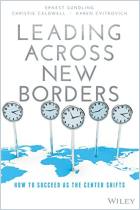Agile experts Glaudia Califano and David Spinks elucidate the challenges and techniques involved in implementing agile across cultures – even if they do veer too far into cultural and national typecasting at times. The authors traveled the globe to garner insights into the application of agile in diverse, real-world contexts. Understanding the broad cultural differences between continents and countries in which you practice agile – either on-site or virtually – will help you assemble agile teams with the right ingredients to succeed anywhere, while avoiding cultural faux pas.
Since its origins in the 1990s, the agile movement revolutionized product design and has gone global.
Inspired by Japanese work culture, but first adopted in the United States, agile has revolutionized management practices and gone global. Yet implementing agile across cultures proves no simple task. Cultural differences across teams, organizations and national borders can alter application of the methodology and the agile mind-set. When cultures collide – across teams, industries or nations – misunderstandings can arise.
Models exploring national cultural differences start with Hofstede’s – developed in the late 1960s and early 1970s. However, the simpler, behaviors-based “Lewis Model” better suits examining agile teams worldwide. Lewis categorizes nations by how much they talk versus listen; their degree of rationality versus emotionality; task orientation versus people orientation; and emotionalism versus stoicism. Lewis found differences between societies in which, for example, people avoid losing face at all costs, versus those emphasizing displays of emotion. Italy, for example, lands at the height...





















Comment on this summary